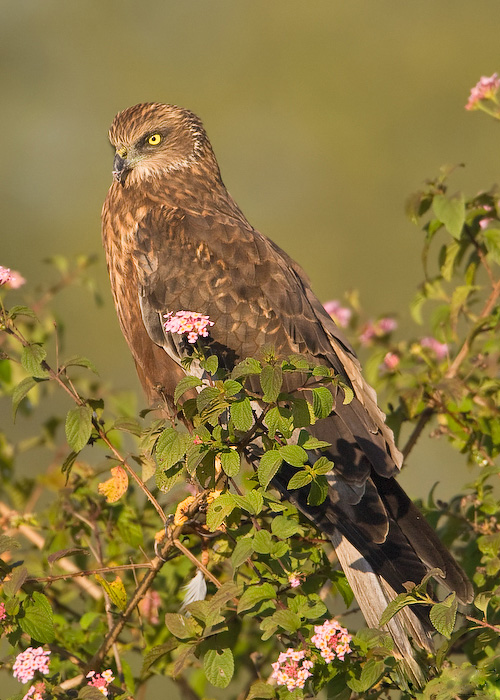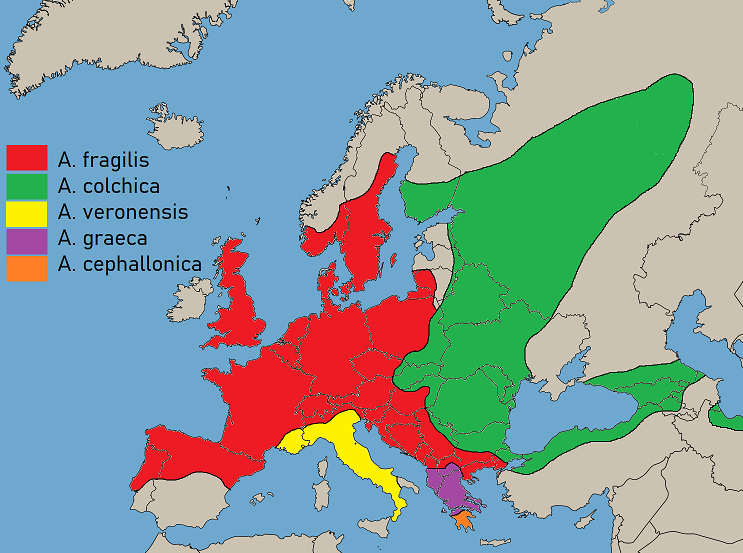|
Worringer Bruch
The Worringer Bruch is a section of swampy lowlands in the far north of Cologne, Germany. It is approximately 8,000 years old, and is now almost a completely dried up meander part of the Rhine. It was named after an adjacent district of Cologne, Worringen, which once was an independent city, which has a thousand years of history (first mentioned in 922). The Worringer Bruch is geographically 37.5 m above sea level, and is the lowest point of Cologne (the highest is 118.3 m – Monte Troodelöh in Königsforst). The water level is closely related to the water level of the river Rhine. Today, Worringer Bruch offers shelter for different types of forest and cultural landscapes such as pastures and orchards, the most important being the floodplain landscape. In addition, Worringer Bruch serves as a valuable regional habitat for several endangered plants and animal species. Playing an essential role in the conservation and protection of nature, rare animals and plant species, it also ... [...More Info...] [...Related Items...] OR: [Wikipedia] [Google] [Baidu] |
Marsh Harrier
The marsh harriers are birds of prey of the harrier subfamily. They are medium-sized raptors and the largest and broadest-winged harriers. Most of them are associated with marshland and dense reedbeds. They are found almost worldwide, excluding only the Americas. Until recently two species were generally recognized: the marsh harrier (''Circus aeruginosus'') and the African marsh harrier (''C. ranivorus''). The marsh harrier is now usually split into several species, sometimes as many as six. These are the western marsh harrier (''C. aeruginosus''), eastern marsh harrier (''C. spilonotus''), Papuan harrier (''C. spilonotus spilothorax'' or ''C. spilothorax''), swamp harrier (''C. approximans''), Réunion harrier (''C. maillardi maillardi'' or ''C. maillardi'') and Madagascar marsh harrier (''C. maillardi macrosceles'' or ''C. macrosceles''). At the beginning of the 20th century, the marsh harrier was hunted to extinction in the United Kingdom. After being reintroduced fro ... [...More Info...] [...Related Items...] OR: [Wikipedia] [Google] [Baidu] |
Geography Of Cologne
Cologne ( ; german: Köln ; ksh, Kölle ) is the largest city of the German western state of North Rhine-Westphalia (NRW) and the fourth-most populous city of Germany with 1.1 million inhabitants in the city proper and 3.6 million people in the urban region. Centered on the left (west) bank of the Rhine, Cologne is about southeast of NRW's state capital Düsseldorf and northwest of Bonn, the former capital of West Germany. The city's medieval Catholic Cologne Cathedral (), the third-tallest church and tallest cathedral in the world, constructed to house the Shrine of the Three Kings, is a globally recognized landmark and one of the most visited sights and pilgrimage destinations in Europe. The cityscape is further shaped by the Twelve Romanesque churches of Cologne, and Cologne is famous for Eau de Cologne, that has been produced in the city since 1709, and "cologne" has since come to be a generic term. Cologne was founded and established in Germanic Ubii terri ... [...More Info...] [...Related Items...] OR: [Wikipedia] [Google] [Baidu] |
German Wikipedia
The German Wikipedia (german: Deutschsprachige Wikipedia) is the German-language edition of Wikipedia, a free and publicly editable online encyclopedia. Founded on March 16, 2001, it is the second-oldest Wikipedia (after the English Wikipedia), and with articles, at present () the -largest edition of Wikipedia by number of articles, behind English Wikipedia and the mostly bot-generated Cebuano Wikipedia.ikipedia-l">Jimmy Wales [Wikipedia-l/nowiki>Alternative language Wikipedias, 16 March 2001List of Wikipedias/Table meta.wikimedia.org, Statistics It has the second-largest number of edits behind the English Wikipedia and over 260,000 disambiguation pages. On November 7, 2011, it became the second edition of Wikipedia, after the English edition, to exceed 100 million page edits. The German Wikipedia ... [...More Info...] [...Related Items...] OR: [Wikipedia] [Google] [Baidu] |
European Honey Buzzard
The European honey buzzard (''Pernis apivorus''), also known as the pern or common pern, is a bird of prey in the family Accipitridae. Etymology Despite its English name, this species is more closely related to kites of the genera '' Leptodon'' and '' Chondrohierax'' than to true buzzards in '' Buteo''. The binomen is derived from Ancient Greek ''pernes'' περνης, a term used by Aristotle for a bird of prey, and Latin ''apivorus'' "bee-eating", from ''apis'', "bee" and ''-vorus'', "-eating". In fact, bees are much less important than wasps in the birds' diet. Note that it is accordingly called ("wasp buzzard") in German and similarly in some other Germanic languages and also in Hungarian ("darázsölyv"). Description file:Pernis apivorus i080515 w ad 080519.jpg, Scale-like feathers around the eyes and forehead provide armour against the stings of its prey species.Ferguson-Lees, J.; Christie, D.A. (2001) Raptors of the World. Christopher Helm, London. file:Beine Wespenbu ... [...More Info...] [...Related Items...] OR: [Wikipedia] [Google] [Baidu] |
Long-eared Owl
The long-eared owl (''Asio otus''), also known as the northern long-eared owlOlsen, P.D. & Marks, J.S. (2019). ''Northern Long-eared Owl (Asio otus)''. In: del Hoyo, J., Elliott, A., Sargatal, J., Christie, D.A. & de Juana, E. (eds.). Handbook of the Birds of the World Alive. Lynx Edicions, Barcelona. or, more informally, as the lesser horned owl or cat owl,Voous, K.H. (1988). ''Owls of the Northern Hemisphere''. The MIT Press, . is a medium-sized species of owl with an extensive breeding range. The scientific name is from Latin. The genus name ''Asio'' is a type of eared owl, and ''otus'' also refers to a small, eared owl. The species breeds in many areas through Europe and the Palearctic, as well as in North America. This species is a part of the larger grouping of owls known as typical owls, of the family Strigidae, which contains most extant species of owl (while the other taxonomic family of owls are the barn owls, or Tytonidae).''Owls of the World: A Photographic Guide' ... [...More Info...] [...Related Items...] OR: [Wikipedia] [Google] [Baidu] |
Black Woodpecker
The black woodpecker (''Dryocopus martius'') is a large woodpecker that lives in mature forests across the northern Palearctic realm, Palearctic. It is the sole representative of its genus in that region. Its range is expanding. The black woodpecker is easily the largest woodpecker species in Europe as well as in the portion of Asia where it lives and is one of the largest species worldwide. This Bird migration, non-migratory species tends to make its home in old-growth forest or large Woodlot, forest stands and excavates a large Tree hollow, tree hole to reside in. In turn, several species rely on black woodpeckers to secondarily reside in the holes made in trees by them. This woodpeckers diet consists mostly of carpenter ants. This species is closely related to, and fills the same ecological niche in Europe as, the pileated woodpecker of North America and the lineated woodpecker of South America, also being similar to the white-bellied woodpecker which is distributed to the sout ... [...More Info...] [...Related Items...] OR: [Wikipedia] [Google] [Baidu] |
Nightingale
The common nightingale, rufous nightingale or simply nightingale (''Luscinia megarhynchos''), is a small passerine bird best known for its powerful and beautiful song. It was formerly classed as a member of the thrush family Turdidae, but is now more generally considered to be an Old World flycatcher, Muscicapidae. It belongs to a group of more terrestrial species, often called chats. Etymology "Nightingale" is derived from "night" and the Old English ''galan'', "to sing". The genus name ''Luscinia'' is Latin for "nightingale" and ''megarhynchos'' is from Ancient Greek ''megas'', "great" and ''rhunkhos'' "bill". Subspecies *western nightingale (''L. m. megarhynchos'') - Western Europe, North Africa and Asia Minor, wintering in tropical Africa *Caucasian nightingale (''L. m. africana'') - The Caucasus and eastern Turkey to southwestern Iran and Iraq, wintering in East Africa *eastern nightingale (''L. m. golzii'') - The Aral Sea to Mongolia, wintering in coastal East Afric ... [...More Info...] [...Related Items...] OR: [Wikipedia] [Google] [Baidu] |
Cologne
Cologne ( ; german: Köln ; ksh, Kölle ) is the largest city of the German western state of North Rhine-Westphalia (NRW) and the fourth-most populous city of Germany with 1.1 million inhabitants in the city proper and 3.6 million people in the urban region. Centered on the left (west) bank of the Rhine, Cologne is about southeast of NRW's state capital Düsseldorf and northwest of Bonn, the former capital of West Germany. The city's medieval Catholic Cologne Cathedral (), the third-tallest church and tallest cathedral in the world, constructed to house the Shrine of the Three Kings, is a globally recognized landmark and one of the most visited sights and pilgrimage destinations in Europe. The cityscape is further shaped by the Twelve Romanesque churches of Cologne, and Cologne is famous for Eau de Cologne, that has been produced in the city since 1709, and "cologne" has since come to be a generic term. Cologne was founded and established in Germanic ... [...More Info...] [...Related Items...] OR: [Wikipedia] [Google] [Baidu] |
Toad
Toad is a common name for certain frogs, especially of the family Bufonidae, that are characterized by dry, leathery skin, short legs, and large bumps covering the parotoid glands. A distinction between frogs and toads is not made in scientific taxonomy, but is common in popular culture ( folk taxonomy), in which toads are associated with drier, rougher skin and more terrestrial habitats. List of toad families In scientific taxonomy, toads include the true toads (Bufonidae) and various other terrestrial or warty-skinned frogs. Non-bufonid "toads" can be found in the families: * Bombinatoridae (fire-bellied toads and jungle toads) * Calyptocephalellidae ( helmeted water toad and false toads) * Discoglossidae ( midwife toads) * Myobatrachidae (Australian toadlets) * Pelobatidae ( European spadefoot toad) * Rhinophrynidae ( burrowing toads) * Scaphiopodidae ( American spadefoot toads) * Microhylidae ( narrowmouth toads) Biology Usually the largest of the bumps ... [...More Info...] [...Related Items...] OR: [Wikipedia] [Google] [Baidu] |
Slowworm
The slow worm (''Anguis fragilis'') is a reptile native to western Eurasia. It is also called a deaf adder, a slowworm, a blindworm, or regionally, a long-cripple and hazelworm. These legless lizards are also sometimes called common slowworms. The "blind" in blindworm refers to the lizard's small eyes, similar to a blindsnake (although the slowworm's eyes are functional). Slow worms are semifossorial (burrowing) lizards, spending much of their time hiding underneath objects. The skin of slow worms is smooth with scales that do not overlap one another. Like many other lizards, they autotomize, meaning that they have the ability to shed their tails to escape predators. While the tail regrows, it does not reach its original length. In the UK, they are common in gardens and allotments, and can be encouraged to enter and help remove pest insects by placing black plastic or providing places to shelter such as piles of logs, corrugated iron sheets or under tiles. On warm days, one or ... [...More Info...] [...Related Items...] OR: [Wikipedia] [Google] [Baidu] |



.jpg)



